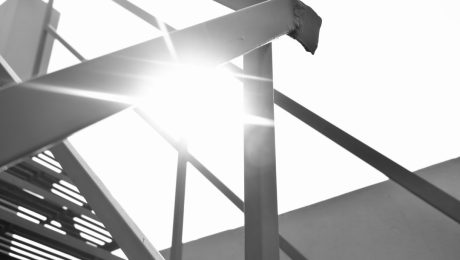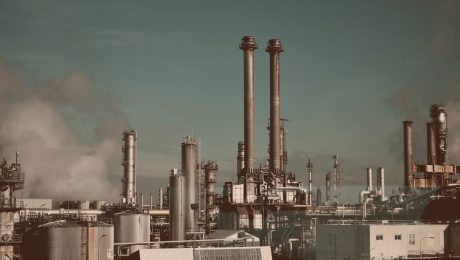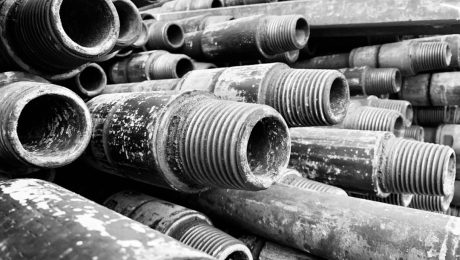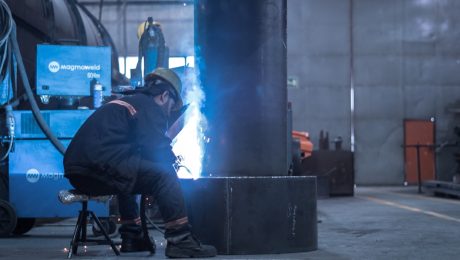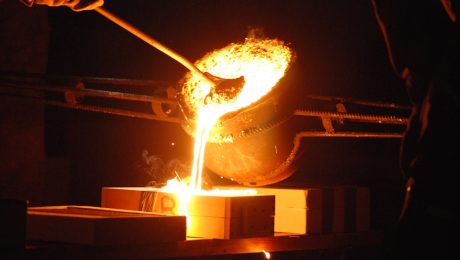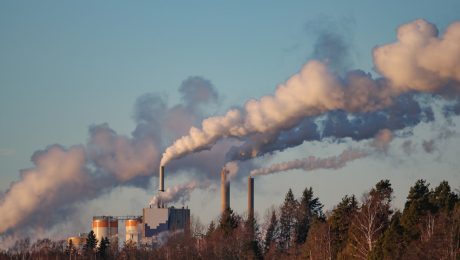body { font-family: sans-serif; line-height: 1.6; }
h1, h2, h3 { color: #333; }
h1 { font-size: 2.5em; }
h2 { font-size: 2em; }
h3 { font-size: 1.5em; }
Modular steel system solutions are revolutionizing construction, manufacturing, and various other industries. Their adaptability, strength, and cost-effectiveness make them a compelling choice for a wide range of projects. This comprehensive guide explores the key aspects of modular steel systems, helping you understand their potential and applications.
Designing with Modular Steel: Flexibility and Precision
The beauty of modular steel lies in its inherent flexibility. Unlike traditional construction methods, modular steel systems utilize prefabricated components that are designed and manufactured off-site. This allows for precise engineering and quality control, minimizing on-site errors and delays. Designs can be customized to accommodate specific needs, from simple storage solutions to complex multi-story buildings. Computer-aided design (CAD) software plays a crucial role in this process, allowing architects and engineers to visualize and refine designs before fabrication begins. This precision also extends to the connections between modules, ensuring structural integrity and stability.
Furthermore, the modular nature allows for easy expansion and modification. If your needs change, you can simply add or remove modules as required, avoiding costly demolition and rebuilding. This adaptability makes modular steel systems particularly attractive for businesses anticipating future growth or changes in their operational requirements.
Seamless Installation: Speed and Efficiency
The prefabricated nature of modular steel components significantly accelerates the installation process. Because much of the work is completed off-site, on-site construction time is drastically reduced. This translates to faster project completion, reduced labor costs, and minimized disruption to ongoing operations. The modules are typically transported to the site and assembled using standardized connection methods, making the process efficient and straightforward. Specialized equipment may be required for lifting and positioning larger modules, but the overall process is significantly faster than traditional methods.
Reduced on-site work also means fewer safety risks and potential delays caused by weather conditions. This streamlined approach enhances project predictability and allows for better budget control.
Customization and Adaptability: Tailoring Solutions to Your Needs
While modular steel systems offer standardized components, they are incredibly adaptable to specific requirements. Different sizes, shapes, and finishes can be incorporated to meet the unique demands of various projects. This customization extends beyond the basic structural elements. For example, interior finishes, insulation, and specialized features can be integrated during the off-site fabrication process, further enhancing the overall functionality and aesthetics of the finished structure.
The ability to customize also allows for the integration of sustainable building practices. For instance, modules can be designed to incorporate energy-efficient materials and systems, contributing to a greener footprint.
Cost-Effectiveness: Balancing Value and Investment
While the initial investment in modular steel systems might seem higher than traditional construction, the long-term cost-effectiveness is undeniable. The reduced on-site labor, faster construction times, and minimized material waste contribute to significant savings. The precision of prefabrication also reduces the likelihood of costly errors and rework. Furthermore, the durability and longevity of steel structures ensure a long lifespan, minimizing the need for frequent repairs and replacements.
The efficiency gains translate to a faster return on investment, making modular steel a financially sound choice for many projects.
Sustainability and Environmental Impact: Building a Greener Future
Modular steel systems contribute positively to environmental sustainability. The precise manufacturing process minimizes material waste, and the use of recycled steel further reduces the environmental impact. The shorter construction time reduces the carbon footprint associated with transportation and on-site activities. Furthermore, modular designs allow for easier deconstruction and recycling at the end of a structure’s lifespan, promoting a circular economy.
The potential for incorporating sustainable building materials and technologies within the modules further enhances the environmental benefits of this approach. This makes modular steel a responsible and forward-thinking solution for environmentally conscious projects.
In conclusion, modular steel system solutions offer a compelling blend of flexibility, efficiency, cost-effectiveness, and sustainability. Their versatility makes them suitable for a broad range of applications, from industrial buildings and commercial structures to residential developments and specialized facilities. By understanding the advantages and applications of modular steel, businesses and individuals can make informed decisions that optimize their projects and contribute to a more sustainable future.
SEO Tags:
#ModularSteelSystems #SteelConstruction #PrefabricatedBuildings #SustainableBuilding #ModularDesign
body { font-family: sans-serif; line-height: 1.6; }
h1, h2, h3 { color: #333; }
h1 { font-size: 2.5em; }
h2 { font-size: 2em; }
h3 { font-size: 1.5em; }
The steel industry is a significant contributor to global greenhouse gas emissions. As pressure mounts to reduce carbon footprints, accurate and transparent reporting of carbon emissions is no longer a luxury, but a necessity. This post delves into the complexities of reporting carbon emissions in steel production, providing a comprehensive overview for industry professionals, investors, and anyone interested in the decarbonization of this vital sector.
Understanding the Scope of Steel Emissions: Scope 1, 2, and 3
Reporting carbon emissions in steel involves classifying them according to their source, using the widely accepted Greenhouse Gas Protocol. This protocol categorizes emissions into three scopes:
- Scope 1: Direct Emissions: These are emissions directly from owned or controlled sources. In steel production, this includes emissions from coke ovens, blast furnaces, and direct combustion in various processes. Accurate measurement involves meticulous monitoring of fuel consumption and emission factors specific to the used fuels and processes.
- Scope 2: Indirect Emissions from Energy Consumption: These emissions arise from the generation of purchased electricity, heat, or steam used in the steelmaking process. Reporting requires data on energy consumption and the associated carbon intensity of the electricity grid or energy supplier. This often involves obtaining carbon emission factors from the utility providers.
- Scope 3: Other Indirect Emissions: This is the most complex category, encompassing emissions from sources not owned or controlled directly by the steel producer but are a consequence of their activities. Scope 3 emissions in steel production include:
- Upstream emissions: From raw material extraction (iron ore mining, coal mining), transportation of raw materials, and manufacturing of purchased goods and services.
- Downstream emissions: From the transportation of finished steel products, use of steel in construction and manufacturing, and end-of-life disposal or recycling.
Accurately quantifying Scope 3 emissions often requires collaboration with suppliers and customers, relying on industry average emission factors or more detailed life cycle assessments (LCAs) where possible.
Calculating Carbon Emissions: Methods and Data Requirements
Accurate carbon emission calculations require robust data collection and appropriate methodologies. Common methods include:
- Tier 1: Direct Measurement: This involves directly measuring emissions using on-site monitoring equipment. This is the most accurate method but can be expensive and complex to implement.
- Tier 2: Emission Factors: This uses default emission factors from industry databases or regulatory bodies. This approach is less precise but more readily available and cost-effective.
- Tier 3: Mass Balance Approach: This method is particularly useful for Scope 3 emissions, estimating emissions based on the mass of materials used and associated emission factors. This requires detailed material flow analysis.
Data requirements include detailed records of fuel consumption, electricity usage, material inputs, transportation distances, and production volumes. Data quality is crucial for the reliability of the emission calculations.
Reporting Frameworks and Standards: Ensuring Transparency
Several frameworks and standards guide carbon emission reporting in the steel industry, ensuring transparency and comparability. Key frameworks include:
- Greenhouse Gas Protocol: Provides the foundational framework for corporate greenhouse gas accounting and reporting.
- Carbon Disclosure Project (CDP): A global non-profit that encourages companies to disclose their environmental impacts, including greenhouse gas emissions.
- Sustainability Accounting Standards Board (SASB): Develops industry-specific sustainability accounting standards, providing guidance for materiality assessment and disclosure.
- Global Reporting Initiative (GRI): A widely used framework for sustainability reporting, including environmental performance indicators.
Adherence to these frameworks ensures consistency and comparability of reported data, facilitating informed decision-making by stakeholders.
Technological Advancements and Decarbonization Strategies
The steel industry is actively pursuing decarbonization strategies to reduce its environmental footprint. Key technological advancements include:
- Hydrogen-based steelmaking: Replacing coal with hydrogen as a reducing agent in the blast furnace significantly reduces CO2 emissions.
- Electric arc furnaces (EAFs): Utilizing electricity instead of fossil fuels for steel production, particularly suitable for scrap-based steelmaking.
- Carbon capture, utilization, and storage (CCUS): Capturing CO2 emissions from steel plants and storing them underground or utilizing them in other industrial processes.
- Improved energy efficiency: Optimizing energy consumption through process improvements and technological upgrades.
Adoption of these technologies is crucial for achieving significant reductions in steel industry emissions.
The Future of Carbon Emission Reporting in Steel: Transparency and Accountability
The future of carbon emission reporting in steel hinges on increased transparency and accountability. This includes:
- Enhanced data collection and verification: Improving data quality and reliability through robust monitoring systems and third-party verification.
- Standardized reporting methodologies: Ensuring consistent and comparable reporting across the industry.
- Increased stakeholder engagement: Involving investors, customers, and other stakeholders in the reporting process.
- Policy and regulatory support: Implementing policies that incentivize emission reductions and transparent reporting.
As the demand for sustainable steel grows, accurate and transparent carbon emission reporting will become increasingly critical for the industry’s long-term success and the broader fight against climate change.
Tags: Steel emissions, carbon reporting, decarbonization, greenhouse gas protocol, sustainability reporting
body { font-family: sans-serif; line-height: 1.6; }
h1, h2, h3 { color: #333; }
h1 { font-size: 2.5em; }
h2 { font-size: 2em; }
h3 { font-size: 1.5em; }
Steel, an alloy of iron and carbon, forms the backbone of countless industries. Its versatility stems from the broad range of varieties available, each possessing unique properties tailored to specific applications. This comprehensive guide delves into the fascinating world of steel, exploring its diverse types and their characteristics.
1. Carbon Steels: The Foundation of Strength
Carbon steels are the most basic and widely used type of steel. Their properties are primarily determined by the carbon content, ranging from a fraction of a percent to around 2%. Low-carbon steels (mild steels), with carbon content below 0.3%, are known for their ductility, weldability, and formability, making them ideal for applications like automotive body panels, pipes, and structural components. Medium-carbon steels (0.3% to 0.6% carbon) offer improved strength and hardness, suitable for machine parts, shafts, and railway wheels. High-carbon steels (0.6% to 2% carbon), on the other hand, boast exceptional hardness and wear resistance, commonly used in tools, springs, and cutting edges.
2. Stainless Steels: Resistance to Corrosion and Heat
Stainless steels owe their superior corrosion resistance to the presence of chromium (at least 10.5%), which forms a protective chromium oxide layer on the surface. This layer prevents rust and degradation, making stainless steel ideal for applications in harsh environments. Different grades of stainless steel exist, categorized into austenitic, ferritic, martensitic, and duplex. Austenitic stainless steels, like 304 and 316, are known for their excellent formability and corrosion resistance, commonly used in kitchen appliances, medical instruments, and chemical processing equipment. Ferritic stainless steels offer good corrosion resistance and magnetic properties. Martensitic stainless steels are hardenable and used in cutlery and surgical tools. Duplex stainless steels combine the properties of austenitic and ferritic grades, providing exceptional strength and corrosion resistance.
3. Alloy Steels: Tailored Properties for Specific Needs
Alloy steels enhance the properties of carbon steel by adding various alloying elements like nickel, chromium, molybdenum, manganese, and vanadium. These additions modify the steel’s strength, hardness, toughness, corrosion resistance, and other characteristics. For instance, nickel increases toughness and corrosion resistance, while molybdenum enhances strength and high-temperature performance. Alloy steels find applications in a vast array of industries, including aerospace, construction, and energy, where specific properties are critical for optimal performance.
4. Tool Steels: The Masters of Cutting and Shaping
Tool steels are high-carbon, high-alloy steels designed for their exceptional hardness, wear resistance, and ability to hold a sharp edge. They are crucial in manufacturing processes, used to create cutting tools, dies, and molds. Different types of tool steels cater to specific applications, with variations in composition influencing their properties. High-speed steels (HSS) maintain their hardness at high temperatures, enabling high-speed machining. Other tool steels, like cold-work tool steels, are designed for applications at lower temperatures, prioritizing wear resistance and dimensional stability.
5. Specialized Steels: Meeting Unique Demands
Beyond the common types, numerous specialized steels cater to niche applications requiring unique properties. These include maraging steels, known for their exceptional strength and toughness; spring steels, characterized by high elasticity and resilience; and electrical steels, optimized for low energy losses in electrical applications. The development of specialized steels continues to push the boundaries of material science, enabling innovative solutions in diverse fields.
Choosing the right steel depends on the specific application and required properties. Factors to consider include strength, hardness, ductility, weldability, corrosion resistance, and cost. Consulting with materials engineers can ensure the selection of the optimal steel grade for your project.
SEO-Friendly Tags:
- Steel Types
- Steel Grades
- Carbon Steel Properties
- Stainless Steel Applications
- Alloy Steel Selection
The steel manufacturing industry is a powerhouse of global economies, but its inherent processes present significant occupational safety challenges. From the extreme heat of furnaces to the heavy machinery and sharp materials involved, the potential for serious injury or fatality is ever-present. This comprehensive guide explores the crucial aspects of occupational safety in steel manufacturing, providing insights into best practices, regulations, and proactive measures to create a safer working environment.
1. Identifying and Assessing Hazards in Steel Manufacturing
Hazard identification is the cornerstone of any effective safety program. In steel manufacturing, hazards are numerous and varied. They can be broadly categorized into:
- Physical Hazards: These include extreme temperatures (both high and low), noise pollution, vibration, radiation (from welding processes), and ergonomic risks associated with repetitive movements and awkward postures. Specific examples include burns from molten metal, hearing loss from constant loud machinery, and musculoskeletal disorders from repetitive lifting.
- Chemical Hazards: Steel manufacturing involves exposure to various chemicals, including dusts (e.g., silica dust), fumes (e.g., welding fumes), and gases (e.g., carbon monoxide). These can cause respiratory problems, skin irritation, and other health issues. Proper ventilation and respiratory protection are critical.
- Biological Hazards: While less prevalent than physical and chemical hazards, biological hazards can still exist, particularly in areas with poor sanitation or inadequate pest control. Mold, bacteria, and viruses can lead to infections.
- Mechanical Hazards: Heavy machinery, sharp tools, and moving parts pose significant mechanical hazards. Crushing injuries, lacerations, and amputations are potential risks. Regular maintenance, machine guarding, and lockout/tagout procedures are essential.
- Heat-resistant clothing: Protective clothing made from materials that resist high temperatures is essential for workers near furnaces and molten metal.
- Safety footwear: Steel-toe boots are mandatory to protect feet from falling objects and crushing hazards.
- Safety helmets: Hard hats protect workers’ heads from falling objects and impacts.
- Eye and face protection: Safety glasses, goggles, or face shields are crucial to protect eyes from sparks, flying debris, and chemical splashes.
- Hearing protection: Ear plugs or ear muffs are essential in noisy environments to prevent hearing loss.
- Respiratory protection: Respirators are necessary when working with dusts, fumes, or gases to prevent inhalation hazards.
- Gloves: Appropriate gloves are essential to protect hands from cuts, burns, and chemical exposure. Different types of gloves are needed for different tasks.
- Emergency exits and escape routes: Clearly marked and easily accessible emergency exits are essential. Regular drills should be conducted to ensure workers are familiar with escape routes.
- Fire safety measures: Fire extinguishers should be strategically located and readily accessible. Workers should receive training on fire prevention and the proper use of fire extinguishers.
- First aid and medical response: A well-stocked first-aid station and readily available medical personnel are vital. Workers should be trained in basic first aid.
- Emergency communication systems: A reliable communication system is essential to alert workers to emergencies and coordinate response efforts.
- Spill response procedures: Procedures for handling spills of hazardous materials should be in place, including proper containment and cleanup methods.
- Hazard communication: Employers must provide workers with information about the hazards associated with their jobs and the necessary safety precautions.
- Machine guarding: Machines must be properly guarded to prevent injuries from moving parts.
- Lockout/tagout procedures: Procedures for locking out and tagging out energy sources before maintenance or repair work must be followed.
- Personal protective equipment (PPE): Employers must provide workers with appropriate PPE and ensure it is properly used.
- Training and education: Workers must receive adequate training on safety procedures and the hazards associated with their jobs.
- Record-keeping: Detailed records of accidents, injuries, and safety inspections must be maintained.
- Proactive safety management: Implementing a proactive approach to safety, focusing on preventing accidents rather than just reacting to them.
- Worker participation: Encouraging workers to actively participate in safety programs and report hazards.
- Regular safety training: Providing regular and ongoing safety training to workers.
- Safety audits and inspections: Conducting regular safety audits and inspections to identify potential hazards and areas for improvement.
- Incident investigation: Thoroughly investigating all accidents and near misses to identify root causes and prevent future incidents.
- Performance measurement: Tracking key safety metrics to monitor progress and identify areas for improvement.
A thorough risk assessment, involving identifying the likelihood and severity of each hazard, is crucial for prioritizing safety interventions and developing effective control measures.
2. Personal Protective Equipment (PPE) in Steel Mills
Personal Protective Equipment (PPE) plays a vital role in mitigating the risks associated with steel manufacturing. The specific PPE required will vary depending on the task, but generally includes:
Regular inspection and maintenance of PPE are critical to ensure its effectiveness. Workers must be properly trained on the correct use and limitations of their PPE.
3. Emergency Procedures and Response in Steel Manufacturing
Having well-defined emergency procedures and a robust response system is crucial in a high-risk environment like a steel mill. This includes:
Regular emergency drills and training are essential to ensure workers are prepared to respond effectively in the event of an emergency.
4. Regulatory Compliance and Legal Aspects of Steel Manufacturing Safety
Steel manufacturers must adhere to a wide range of safety regulations and legal requirements, which vary depending on the location. These regulations typically cover aspects such as:
Non-compliance with these regulations can result in significant penalties, including fines and legal action. Regular safety audits and inspections are essential to ensure ongoing compliance.
5. Continuous Improvement and Safety Culture in Steel Manufacturing
Maintaining a strong safety culture is crucial for long-term success in steel manufacturing. This involves:
A strong safety culture, where safety is a core value and everyone takes responsibility for their own safety and the safety of others, is essential for creating a safe and productive work environment.
By implementing these measures and fostering a strong safety culture, steel manufacturers can significantly reduce the risk of workplace accidents and injuries, creating a safer and more productive environment for their employees.
Tags: steel manufacturing safety, occupational safety, steel mill safety, workplace safety, industrial safety
Choosing between concrete and steel for a construction project is a critical decision impacting cost, durability, sustainability, and aesthetic appeal. Both materials are incredibly strong and versatile, but their properties differ significantly, making them suitable for different applications. This in-depth comparison will help you understand the nuances of each material and make an informed choice.
Strength and Durability: A Tale of Two Titans
Concrete’s compressive strength is legendary. It excels at resisting crushing forces, making it ideal for foundations, columns, and walls. However, its tensile strength (resistance to pulling forces) is considerably lower. Steel, on the other hand, boasts exceptional tensile strength, making it perfect for beams, girders, and tension members. While steel can also withstand compressive forces, it’s its ability to withstand tension that truly sets it apart. The combination of concrete’s compressive strength and steel’s tensile strength is often exploited in reinforced concrete structures, where steel rebar provides tensile reinforcement within the concrete matrix.
Cost Analysis: Balancing Budget and Performance
The cost of concrete and steel varies depending on location, availability, and market fluctuations. Generally, concrete is often less expensive than steel on a per-unit-volume basis. However, the overall cost of a project depends on many factors beyond material cost alone. The complexity of forming and pouring concrete, along with potential labor costs, can significantly impact the final price. Steel fabrication and erection can also be expensive, especially for complex structures. Furthermore, transportation costs for both materials can vary greatly depending on distance and accessibility.
Consideration should also be given to the long-term costs. Steel may require more frequent maintenance to prevent corrosion, while concrete can suffer from cracking or degradation over time, particularly in harsh environments. The lifecycle cost analysis, taking into account initial investment, maintenance, and lifespan, is crucial in making a financially sound decision.
Environmental Impact: A Green Construction Perspective
Both concrete and steel have significant environmental footprints. Concrete production is a major consumer of energy and contributes significantly to carbon dioxide emissions. The cement manufacturing process, specifically the calcination of limestone, is a large source of these emissions. Steel production, while also energy-intensive, has seen advancements in reducing its carbon footprint through the use of recycled steel and improved production processes. However, both materials require significant transportation, adding to their overall environmental impact.
Sustainable alternatives and practices are constantly being explored. The use of recycled aggregates in concrete, low-carbon cement, and improved steel recycling infrastructure are steps towards minimizing the environmental impact of these construction materials.
Design Flexibility and Aesthetics: Shaping the Built Environment
Steel’s flexibility allows for the creation of intricate and lightweight structures with long spans. This makes it particularly suitable for modern architectural designs, bridges, and high-rise buildings. Concrete, while less flexible in terms of shaping, offers significant design versatility. It can be cast into almost any shape, allowing for unique architectural forms and intricate detailing. Advances in concrete technology, including high-performance concrete and self-consolidating concrete, have further expanded its design possibilities.
Aesthetically, both materials can be used to create visually stunning structures. Steel’s sleek lines and strength can be showcased in exposed structural elements, while concrete’s texture and color can be manipulated to create a variety of finishes and architectural expressions.
Maintenance and Lifespan: Long-Term Considerations
The lifespan of both concrete and steel structures can be extensive, but proper maintenance is crucial. Steel is susceptible to corrosion, requiring regular inspections and protective coatings to prevent rust and deterioration. Concrete can crack due to shrinkage, temperature changes, or overloading, potentially requiring repairs or strengthening. Regular maintenance, including crack sealing, waterproofing, and surface treatments, can significantly extend the lifespan of concrete structures.
The choice between concrete and steel often involves a trade-off between initial cost, maintenance requirements, and expected lifespan. A thorough assessment of the project’s specific requirements and environmental conditions is essential in determining the most appropriate material choice.
Ultimately, the choice between concrete and steel depends on a variety of factors, including the specific project requirements, budget, environmental considerations, and aesthetic preferences. A careful analysis of each material’s strengths and weaknesses is crucial in making an informed decision that leads to a successful and sustainable construction project.
Tags: Concrete, Steel, Construction Materials, Building Materials, Structural Engineering
body {
font-family: sans-serif;
line-height: 1.6;
}
h1, h2, h3 {
color: #333;
}
img {
max-width: 100%;
height: auto;
}
In the world of industrial machinery, standardized parts often fall short of meeting specific operational demands. This is where the power of customized steel machine parts comes into play. By tailoring components to precise specifications, manufacturers can optimize performance, enhance durability, and achieve unparalleled efficiency. This comprehensive guide delves into the intricacies of customized steel machine parts, exploring their design, manufacturing, applications, and the significant advantages they offer.
Designing for Precision: The Custom Steel Part Design Process
Designing a custom steel machine part begins with a thorough understanding of the application. Engineers work closely with clients to define the part’s function, operating environment, and performance requirements. This involves detailed analysis of stress points, load capacity, and potential wear and tear. Advanced computer-aided design (CAD) software is employed to create precise 3D models, allowing for virtual testing and optimization before physical production. Material selection is crucial at this stage, considering factors like strength, corrosion resistance, and cost-effectiveness. Common steel grades used include high-carbon steel, alloy steel, stainless steel, and tool steel, each offering unique properties.
Material Matters: Selecting the Right Steel for Your Custom Part
The choice of steel significantly impacts the performance and lifespan of a custom machine part. High-carbon steel offers exceptional strength and hardness, making it ideal for high-stress applications. Alloy steels, with their enhanced properties through the addition of alloying elements, provide superior toughness, wear resistance, and corrosion resistance. Stainless steel is preferred where corrosion is a major concern, such as in food processing or chemical industries. Tool steels, renowned for their exceptional hardness and wear resistance, are frequently used for cutting tools and dies. The selection process involves careful consideration of the specific demands of the application, balancing performance needs with cost and availability.
Manufacturing Methods: Shaping Steel into Precision Components
Various manufacturing processes are employed to create customized steel machine parts, each offering unique advantages. Forging, a process involving shaping metal using compressive forces, produces exceptionally strong and durable components. Machining, using tools to remove material from a workpiece, allows for precise dimensions and intricate details. Casting, pouring molten metal into a mold, is cost-effective for complex shapes, while 3D printing offers unparalleled design flexibility and rapid prototyping capabilities. The choice of manufacturing method depends on factors such as part complexity, required tolerances, material properties, and production volume. Advanced manufacturing techniques like laser cutting and waterjet cutting ensure high precision and efficient material utilization.
Applications Across Industries: Where Custom Steel Parts Shine
Customized steel machine parts find applications across a wide range of industries. In the automotive industry, they are integral to engine components, transmissions, and chassis systems. The aerospace industry relies on custom steel parts for high-strength, lightweight components in aircraft and spacecraft. Manufacturing uses custom parts for machinery, tooling, and automation systems. The energy sector utilizes them in power generation equipment and oil and gas extraction machinery. The medical device industry employs custom steel parts in surgical instruments and implants. The versatility of custom steel parts allows for tailored solutions to meet the unique requirements of diverse applications.
The Advantages of Customized Steel Machine Parts: Beyond Standardization
Choosing customized steel machine parts offers several compelling advantages over using off-the-shelf components. Firstly, it allows for precise optimization of performance, ensuring the part meets the specific demands of the application. Secondly, it enhances durability and lifespan, reducing the frequency of replacements and minimizing downtime. Thirdly, it enables the creation of innovative designs that are not possible with standardized parts, leading to improved efficiency and functionality. Fourthly, it allows for the incorporation of specialized features such as coatings or surface treatments to enhance specific properties like corrosion resistance or wear resistance. Finally, it offers the opportunity to reduce overall costs in the long run by improving efficiency and reducing maintenance needs. The investment in custom parts often translates to significant long-term savings.
In conclusion, customized steel machine parts represent a powerful solution for manufacturers seeking to optimize performance, enhance durability, and drive innovation. By carefully considering design, material selection, and manufacturing processes, engineers can create components that precisely meet the unique demands of their applications, delivering significant advantages across diverse industries. The investment in custom solutions ultimately leads to greater efficiency, reduced downtime, and a competitive edge in the marketplace.
SEO Tags:
- Custom Steel Machine Parts
- Customized Steel Components
- Precision Steel Parts Manufacturing
- Industrial Steel Parts
- Custom Metal Fabrication
body { font-family: sans-serif; line-height: 1.6; }
h1, h2, h3 { color: #333; }
h1 { font-size: 2.5em; }
h2 { font-size: 2em; }
h3 { font-size: 1.5em; }
The steel industry, a cornerstone of global infrastructure, faces increasing pressure to reduce its significant carbon footprint. Accurate and transparent reporting of carbon emissions is crucial for driving sustainability initiatives, meeting regulatory requirements, and attracting environmentally conscious investors. This comprehensive guide explores the complexities of reporting carbon emissions in the steel sector, providing a clear understanding of the process and its implications.
Understanding the Scope of Steel Emissions: Scope 1, 2, and 3
Reporting carbon emissions follows the widely accepted Greenhouse Gas (GHG) Protocol, which categorizes emissions into three scopes:
- Scope 1: Direct Emissions: These are emissions from sources owned or controlled by the steel company. In the steel industry, this primarily includes emissions from the combustion of fossil fuels in blast furnaces, coke ovens, and other production processes. Methane emissions from coal mines supplying coke are also included here.
- Scope 2: Indirect Emissions from Energy Consumption: These are emissions from the generation of purchased electricity, heat, or steam consumed by the steel plant. This scope considers the emissions associated with the energy sources used by the electricity provider.
- Scope 3: Other Indirect Emissions: This is the most complex category and encompasses emissions from sources not owned or controlled by the company but related to its operations. For steel producers, Scope 3 emissions can be significant and include:
- Upstream emissions: Emissions from raw material production (iron ore mining, coal mining, limestone quarrying), transportation of raw materials, and the manufacturing of purchased goods and services.
- Downstream emissions: Emissions from the transportation and distribution of steel products, as well as emissions associated with the use and end-of-life of steel products.
Accurately quantifying Scope 3 emissions is challenging due to the complexity of the supply chain, requiring collaboration with suppliers and using data aggregation techniques.
Methodologies for Calculating Steel Emissions
Several methodologies exist for calculating steel emissions, each with varying levels of detail and complexity. The most commonly used include:
- Life Cycle Assessment (LCA): A comprehensive methodology that assesses the environmental impacts of a product throughout its entire life cycle, from raw material extraction to end-of-life disposal. LCA provides a holistic view of emissions, including Scope 1, 2, and 3.
- Process-Based Accounting: This method focuses on quantifying emissions from specific processes within the steel production chain. It requires detailed data on energy consumption, fuel use, and material inputs for each process.
- Input-Output Analysis: This approach uses economic input-output tables to estimate emissions associated with the production of steel and its related industries. It is particularly useful for estimating Scope 3 emissions.
The choice of methodology depends on the specific needs and resources of the steel company, the level of detail required, and the availability of data.
Data Collection and Verification: Ensuring Accuracy
Accurate carbon accounting requires robust data collection and verification processes. This involves:
- Establishing a data management system: Implementing a system to collect, store, and manage emission data from various sources, including energy meters, production records, and supplier information.
- Data validation and quality control: Implementing procedures to ensure the accuracy and completeness of collected data. This may involve cross-checking data from multiple sources and conducting regular audits.
- Third-party verification: Engaging independent third-party verifiers to audit the company’s emission reporting process and confirm the accuracy and reliability of the reported data. This enhances credibility and transparency.
The quality of data significantly impacts the accuracy of reported emissions, highlighting the importance of meticulous data management.
Reporting Frameworks and Standards
Several reporting frameworks and standards guide the reporting of carbon emissions in the steel industry. These provide a structured approach to ensure consistency and comparability across companies:
- Greenhouse Gas Protocol: The most widely used standard for corporate GHG accounting and reporting, providing a comprehensive framework for categorizing and quantifying emissions.
- Carbon Disclosure Project (CDP): A global non-profit organization that encourages companies to disclose their environmental impact, including carbon emissions. CDP provides a standardized questionnaire and reporting framework.
- Sustainability Accounting Standards Board (SASB): Develops sustainability accounting standards for various industries, including steel, providing guidance on material environmental matters for investors.
- Industry-Specific Standards: Some industry associations develop specific standards and guidelines for reporting emissions in the steel sector, often building upon the broader frameworks mentioned above.
Adherence to these frameworks enhances the reliability and comparability of emission reports, facilitating informed decision-making by investors and stakeholders.
The Future of Carbon Reporting in Steel: Towards Net-Zero
The steel industry is committed to reducing its carbon footprint, with many companies setting ambitious net-zero targets. The future of carbon reporting in steel will likely involve:
- Increased transparency and data availability: Greater data sharing across the supply chain to enable more accurate Scope 3 emission calculations.
- Adoption of advanced technologies: Utilizing digital technologies to improve data collection, analysis, and reporting.
- Focus on lifecycle emissions: Shifting from solely focusing on operational emissions to considering the entire lifecycle of steel products.
- Development of new reporting methodologies: Refining existing methodologies to better capture the complexities of steel production and its associated emissions.
- Increased scrutiny and regulation: Greater regulatory pressure and investor scrutiny will drive more accurate and transparent reporting.
The journey towards a sustainable steel industry relies heavily on accurate and transparent carbon accounting, paving the way for informed decision-making and the adoption of decarbonization strategies.
Tags: Carbon emissions, Steel industry, GHG reporting, Scope 1 2 3 emissions, Sustainability reporting
Power plants, the behemoths of energy generation, rely on robust and reliable infrastructure. At the heart of this infrastructure lies a seemingly simple yet crucial component: steel profiles. From the towering structures to the intricate internal mechanisms, steel profiles form the backbone of modern power plants, ensuring safety, efficiency, and longevity. This post delves into the multifaceted role of steel profiles in power plant construction and operation.
1. Structural Support: The Backbone of Power Plant Construction
Steel profiles, encompassing a vast range of shapes like I-beams, H-beams, channels, and angles, provide the essential structural support for power plants. These profiles form the framework of buildings, supporting heavy machinery, and withstanding significant loads. The choice of profile depends on the specific application and load requirements. For example, I-beams are commonly used in the construction of large spans, such as turbine halls or cooling towers, due to their high bending strength. H-beams, with their wider flanges, offer superior stability and are often employed in columns and supporting structures for heavy equipment. The precise calculations of load-bearing capacity are crucial, requiring expertise in structural engineering to ensure the safety and stability of the entire plant.
2. Material Selection: Balancing Strength, Durability, and Corrosion Resistance
The selection of steel profiles is not a simple matter. Various factors must be considered, including strength, durability, corrosion resistance, and cost. High-strength low-alloy (HSLA) steels are frequently used due to their excellent strength-to-weight ratio, allowing for lighter structures without compromising structural integrity. In environments prone to corrosion, such as coastal power plants or those near industrial areas, weathering steel or steel profiles with protective coatings (galvanizing, painting) are necessary to extend their lifespan and prevent costly repairs. The choice of material is a delicate balance between performance, longevity, and economic considerations, often involving detailed material testing and analysis.
3. Manufacturing and Fabrication: Precision and Efficiency in Production
The manufacturing of steel profiles for power plants demands precision and efficiency. Modern steel mills employ advanced rolling techniques to produce profiles with precise dimensions and tolerances. These profiles are then further processed through cutting, welding, and drilling to create the necessary components for the power plant’s structure and machinery. The fabrication process often involves sophisticated techniques like robotic welding and automated cutting systems to ensure accuracy and speed. Quality control measures throughout the entire manufacturing and fabrication process are essential to guarantee the structural integrity and safety of the finished product. Any defects can have severe consequences in the high-stress environment of a power plant.
4. Specialized Applications: Beyond Structural Support
Beyond their primary structural role, steel profiles find specialized applications within power plants. They are used in the construction of:
- Crane runways: Supporting heavy-duty cranes for lifting and moving equipment.
- Piping supports: Providing stable support for the complex network of pipes carrying steam, water, and other fluids.
- Stairways and walkways: Ensuring safe access to different levels within the plant.
- Electrical conduit and cable tray systems: Protecting electrical wiring and cables from damage.
- Equipment mounting frames: Providing secure and stable mounting points for turbines, generators, and other critical equipment.
These specialized applications require careful consideration of the specific load requirements, environmental factors, and safety regulations.
5. Safety and Maintenance: Ensuring Long-Term Reliability
The safety and longevity of steel profiles in power plants are paramount. Regular inspections and maintenance are essential to detect and address potential problems before they escalate into major issues. This includes checking for corrosion, fatigue, and any signs of structural damage. Proper maintenance practices, such as painting and applying protective coatings, can significantly extend the lifespan of the steel profiles. Furthermore, adhering to strict safety regulations during installation and maintenance procedures is critical to prevent accidents and ensure the safe operation of the power plant. The consequences of structural failure in a power plant can be catastrophic, underscoring the importance of rigorous safety protocols.
In conclusion, steel profiles are an indispensable component of modern power plants. Their strength, durability, and versatility make them essential for structural support, specialized applications, and overall operational efficiency. By carefully selecting materials, employing precise manufacturing techniques, and maintaining rigorous safety protocols, the power industry can leverage the full potential of steel profiles to ensure the reliable and safe generation of power for years to come.
SEO Tags:
- Steel profiles power plants
- Steel structures power generation
- Power plant construction materials
- Industrial steel applications
- Steel profile selection guide
In today’s dynamic business landscape, organizations that embrace continuous improvement stand head and shoulders above the competition. A culture of continuous improvement, often associated with the Japanese philosophy of Kaizen, isn’t just about incremental changes; it’s a fundamental shift in mindset, a commitment to ongoing growth and excellence. This post delves into the key elements of building a thriving continuous improvement culture, empowering your team to consistently seek better ways of working.
1. Fostering a Growth Mindset: The Foundation of Continuous Improvement
A growth mindset is the bedrock of any successful continuous improvement initiative. It’s the belief that abilities and intelligence can be developed through dedication and hard work. In a culture of continuous improvement, mistakes aren’t seen as failures but as valuable learning opportunities. Employees are encouraged to experiment, take calculated risks, and learn from both successes and setbacks. This requires leaders to actively promote a safe space for experimentation, providing constructive feedback rather than criticism. Training programs focused on problem-solving, critical thinking, and creative thinking can significantly enhance the growth mindset within the organization. Implementing regular feedback mechanisms, both upwards and downwards, ensures that all voices are heard and valuable insights are incorporated into the improvement process. This open communication fosters trust and encourages employees to actively participate in the continuous improvement journey.
2. Empowering Employees: Ownership and Accountability
Continuous improvement is not a top-down initiative; it thrives on employee engagement and ownership. Empowering employees means giving them the authority and resources to identify problems, propose solutions, and implement changes within their areas of responsibility. This can be achieved through various methods, including establishing cross-functional teams, providing access to relevant data and information, and offering training on process improvement methodologies like Lean and Six Sigma. Delegating responsibility and trusting employees to make decisions fosters a sense of ownership and accountability, leading to greater buy-in and commitment to the continuous improvement process. Regular recognition and rewards for successful improvement initiatives further incentivize employee participation and reinforce the importance of this cultural shift.
3. Implementing Effective Measurement and Feedback Systems
Continuous improvement requires a robust system for measuring progress and providing timely feedback. Key Performance Indicators (KPIs) should be established to track the effectiveness of improvement initiatives. These KPIs should be aligned with organizational goals and should be easily understood and monitored by all employees. Regular reporting and data visualization help to identify areas for improvement and celebrate successes. Furthermore, feedback mechanisms, such as regular team meetings, suggestion boxes, and employee surveys, provide valuable insights into the effectiveness of the continuous improvement process and allow for adjustments as needed. Transparency in data sharing is crucial, ensuring that everyone has access to the information they need to make informed decisions and contribute to the overall improvement efforts.
4. Building a Culture of Collaboration and Knowledge Sharing
Continuous improvement relies on the collective intelligence of the entire organization. A culture of collaboration and knowledge sharing fosters a sense of teamwork and encourages employees to learn from each other’s experiences. This can be facilitated through regular cross-functional team meetings, knowledge-sharing platforms, mentoring programs, and internal training sessions. By creating a safe and supportive environment where employees feel comfortable sharing their ideas and experiences, organizations can unlock the collective potential of their workforce and drive significant improvements. Implementing tools and technologies that facilitate collaboration, such as project management software and communication platforms, can further enhance the effectiveness of knowledge sharing and teamwork.
5. Leading by Example: The Role of Leadership in Continuous Improvement
Leadership plays a crucial role in fostering a culture of continuous improvement. Leaders must champion the initiative, actively participate in improvement projects, and model the desired behaviors. They should visibly support employee-led initiatives, provide necessary resources, and celebrate successes. Moreover, leaders need to create a culture of psychological safety, where employees feel comfortable expressing their ideas and concerns without fear of retribution. Regular communication from leadership regarding the progress of continuous improvement initiatives is essential to maintain momentum and demonstrate commitment. By leading by example and actively promoting a culture of continuous improvement, leaders can inspire and motivate their teams to consistently strive for excellence.
In conclusion, building a thriving continuous improvement culture requires a holistic approach that encompasses fostering a growth mindset, empowering employees, implementing effective measurement systems, promoting collaboration, and leading by example. By embracing these principles, organizations can unlock the full potential of their workforce, drive significant improvements in efficiency and productivity, and achieve sustainable competitive advantage.
SEO Tags:
Continuous Improvement, Kaizen, Lean Management, Organizational Culture, Process Improvement
Expanding your business to international markets can be incredibly rewarding, but navigating the complexities of exporting to numerous countries requires a well-defined strategy. This guide provides a roadmap for businesses aiming to reach 40 or more countries, outlining key considerations and actionable steps.
1. Thorough Market Research: Identifying Your Ideal Export Destinations
Before even considering logistics, you must identify your target markets. Exporting to 40+ countries doesn’t mean exporting *to* all 40+ countries. A focused approach is crucial. This stage involves:
- Market Size and Potential: Analyze the demand for your product or service in each potential country. Consider factors like population size, GDP per capita, and market saturation.
- Competitive Landscape: Research existing competitors in each market. Understand their strengths, weaknesses, pricing strategies, and market share. This will help you differentiate your offering.
- Regulatory Environment: Each country has unique regulations regarding imports, tariffs, labeling, and certifications. Research these thoroughly to ensure compliance.
- Cultural Considerations: Understand cultural nuances, consumer preferences, and buying behaviors in each target market. Adapt your marketing and product offerings accordingly.
- Infrastructure and Logistics: Assess the ease of doing business, transportation infrastructure, and customs procedures in each country. Some countries offer smoother export processes than others.
Tools like market research databases (e.g., Euromonitor, Statista), government trade agencies, and industry reports can be invaluable during this phase.
2. Legal and Regulatory Compliance: Navigating International Trade Laws
Exporting to multiple countries requires meticulous attention to legal and regulatory compliance. This includes:
- Export Licenses and Permits: Obtain necessary export licenses and permits from your home country. Requirements vary depending on the product, destination country, and quantity.
- Import Regulations: Understand and comply with import regulations in each target country. This includes tariffs, quotas, labeling requirements, and safety standards.
- Intellectual Property Protection: Secure intellectual property rights (patents, trademarks, copyrights) in each target market to protect your brand and innovations.
- Data Privacy Regulations: Adhere to data privacy regulations (e.g., GDPR in Europe, CCPA in California) if you handle customer data.
- Trade Agreements: Leverage existing trade agreements (e.g., NAFTA, EU-Japan EPA) to reduce tariffs and simplify trade procedures.
Consulting with international trade lawyers and specialists is highly recommended to ensure full compliance.
3. International Logistics and Supply Chain Management: Efficient Global Delivery
Efficient logistics is paramount when exporting to many countries. Consider:
- Shipping Methods: Choose appropriate shipping methods (sea freight, air freight, courier services) based on factors like cost, speed, and product fragility.
- Customs Brokerage: Employ experienced customs brokers to handle customs clearance and documentation in each target country.
- Inventory Management: Develop an efficient inventory management system to track stock levels, manage warehousing, and ensure timely delivery.
- Distribution Networks: Establish reliable distribution networks in each target market, including warehousing, transportation, and last-mile delivery.
- Supply Chain Resilience: Build a resilient supply chain that can withstand disruptions caused by geopolitical events, natural disasters, or pandemics.
Utilizing technology like supply chain management software can streamline logistics and improve efficiency.
4. International Marketing and Sales Strategies: Reaching Diverse Consumer Bases
Marketing and sales strategies need to be adapted to each target market. This involves:
- Market Segmentation: Divide your target markets into specific segments based on demographics, psychographics, and buying behavior.
- Localized Marketing Materials: Translate marketing materials (website, brochures, advertising) into the local language and adapt them to local cultural preferences.
- Digital Marketing Strategies: Utilize digital marketing channels (SEO, social media, email marketing) to reach consumers online.
- International Sales Teams: Consider building international sales teams with local expertise or partnering with local distributors or agents.
- Pricing Strategies: Develop appropriate pricing strategies considering local market conditions, competition, and currency fluctuations.
Testing different marketing approaches in each market is crucial for optimizing results.
5. Financial Management and Risk Mitigation: Protecting Your Investment
Managing finances and mitigating risks are vital for successful international expansion. This includes:
- Currency Risk Management: Implement strategies to mitigate currency fluctuations that can impact profitability.
- Payment Terms and Methods: Establish secure payment terms and methods to minimize the risk of non-payment.
- Insurance: Obtain appropriate insurance coverage (cargo insurance, political risk insurance) to protect against potential losses.
- Financial Forecasting and Budgeting: Develop detailed financial forecasts and budgets to track performance and manage cash flow.
- Compliance with International Accounting Standards: Adhere to relevant international accounting standards.
Seeking advice from financial professionals specializing in international trade is highly recommended.
Exporting to 40+ countries is a significant undertaking, but with careful planning, thorough research, and a well-defined strategy, your business can achieve substantial global growth. Remember that flexibility and adaptation are key to navigating the diverse challenges and opportunities presented by international markets.
SEO Tags:
Export Strategy, International Trade, Global Expansion, Market Research, International Logistics

